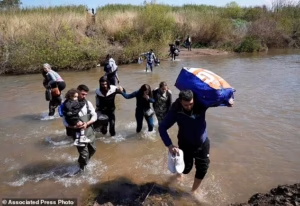BEIRUT – More than a month after a devastating wave of retaliatory attacks claimed the lives of hundreds of Alawite civilians, Syria’s coastal regions remain volatile. Isolated yet deadly assaults targeting members of the religious minority continue into April, leaving Alawites in a state of fear and uncertainty.
Once perceived as beneficiaries under the decades-long rule of the Alawite-led Assad regime, the Alawite community has increasingly become the target of vengeance following the fall of Bashar al-Assad’s government late last year. The power shift has intensified deep-rooted sectarian tensions, particularly with Syria’s Sunni majority.
Although the new leadership has vowed to protect all ethnic and religious minorities, the eruption of violence in March—sparked by a deadly confrontation between Assad loyalists and government forces near Latakia—resulted in a harsh backlash against Alawite civilians.
According to the UK-based Syrian Observatory for Human Rights, over 1,700 people lost their lives in March alone, the vast majority of them civilians. Human rights organizations have corroborated these figures, calling it the deadliest period of violence since Assad was ousted in a swift insurgency by the militant group Hayat Tahrir al-Sham.
READ MORE: Islamic Militants Kill 12 Cameroonian Soldiers in Deadly Attack Near Lake Chad
Eyewitnesses and survivors recount systematic revenge killings in cities like Baniyas and Tartus. Amnesty International’s Syria researcher, Diana Semaan, revealed chilling details from her investigation: “Victims were often asked about their sect before being executed. Some were targeted solely for being Alawite, regardless of their political stance.”

Although large-scale violence has subsided, local reports from Latakia and Tartus indicate that targeted attacks against Alawites have not ceased. Residents describe frequent checkpoints, intimidation, and even killings.
One local man, who spoke to the Associated Press under condition of anonymity, shared how his 20-year-old relative—who worked at a factory and had no military ties—was fatally shot at a checkpoint. “He crossed the same checkpoint daily on his motorcycle. They knew him by name. Then one day, they just shot him,” he said.
Sporadic violence has also spread inland, affecting provinces like Homs. Activist Rami Abdurrahman, who heads the Syrian Observatory, confirmed that at least 42 people have been killed in sectarian-related incidents since the Muslim holiday of Eid al-Fitr on March 30.
Among those targeted are Alawite dissidents who opposed Assad’s rule. Mohammed Saleh, a former political prisoner from Homs, noted that 18 people he personally knew—many of whom were jailed by the Assad regime—were murdered during the violence.
“This country risks replacing one tyranny with another,” Saleh said. “We need a truly national army and security apparatus that serves all Syrians, not just one sect.”
The loss has been deeply felt in educational institutions too. A high school in Baniyas posted a tribute on social media listing nearly 80 individuals—including students, alumni, and teachers—killed in the recent violence.
A heart-wrenching video circulating online shows a grieving mother standing beside her two sons’ bodies while being berated by a militant, accusing them of deserving their fate simply for being Alawite.
Fear has driven tens of thousands of Alawites to seek refuge in neighboring Lebanon. The UN refugee agency reports that around 30,000 have crossed the border through unofficial routes, finding shelter in roughly 30 towns and villages across northern Lebanon. Many arrive exhausted, carrying children and helping elderly relatives across rough terrain.
While Syria’s interim government—headed by Ahmad al-Sharaa—has promised justice and accountability, progress remains slow. A special investigative committee has been established, and a few arrests have been made. However, full findings have not yet been disclosed.
Rights advocates say the government’s response in the coming weeks will be a defining moment.
“We’re now at a critical crossroads,” said Amnesty’s Diana Semaan. “It’s no longer about past atrocities—it’s about what steps the new government will take to prevent future ones and whether it will create an inclusive, just state for all Syrians.”










